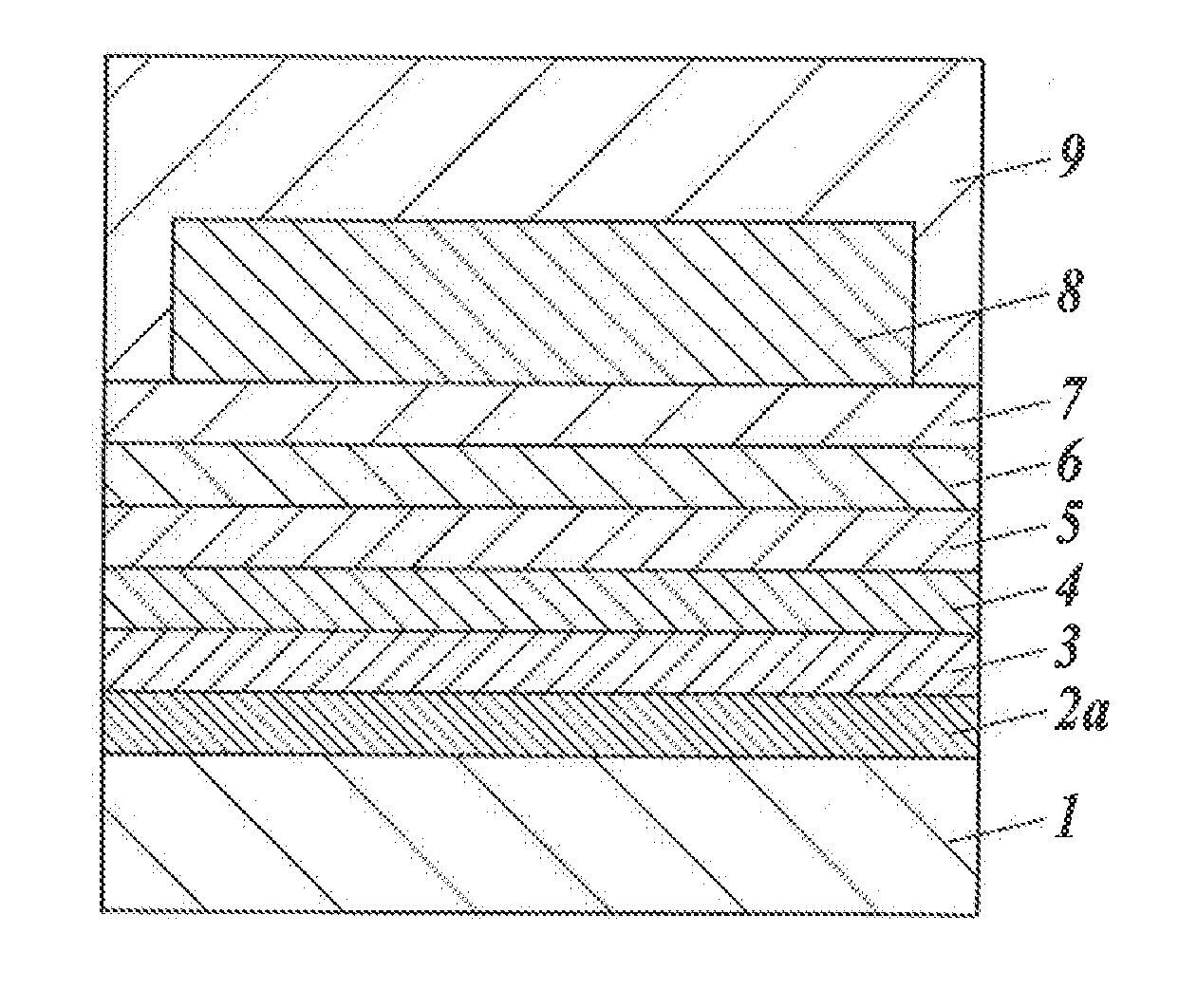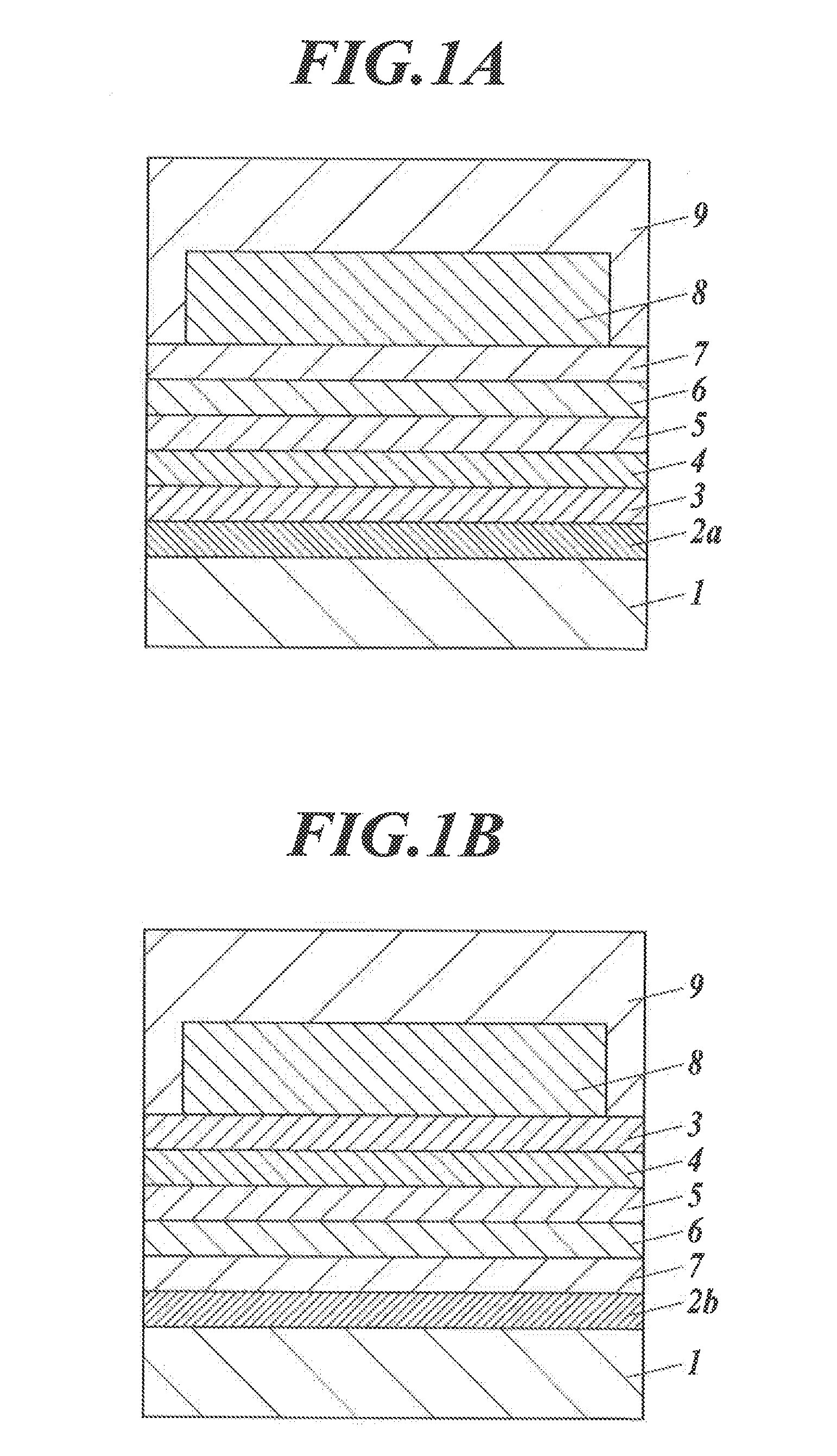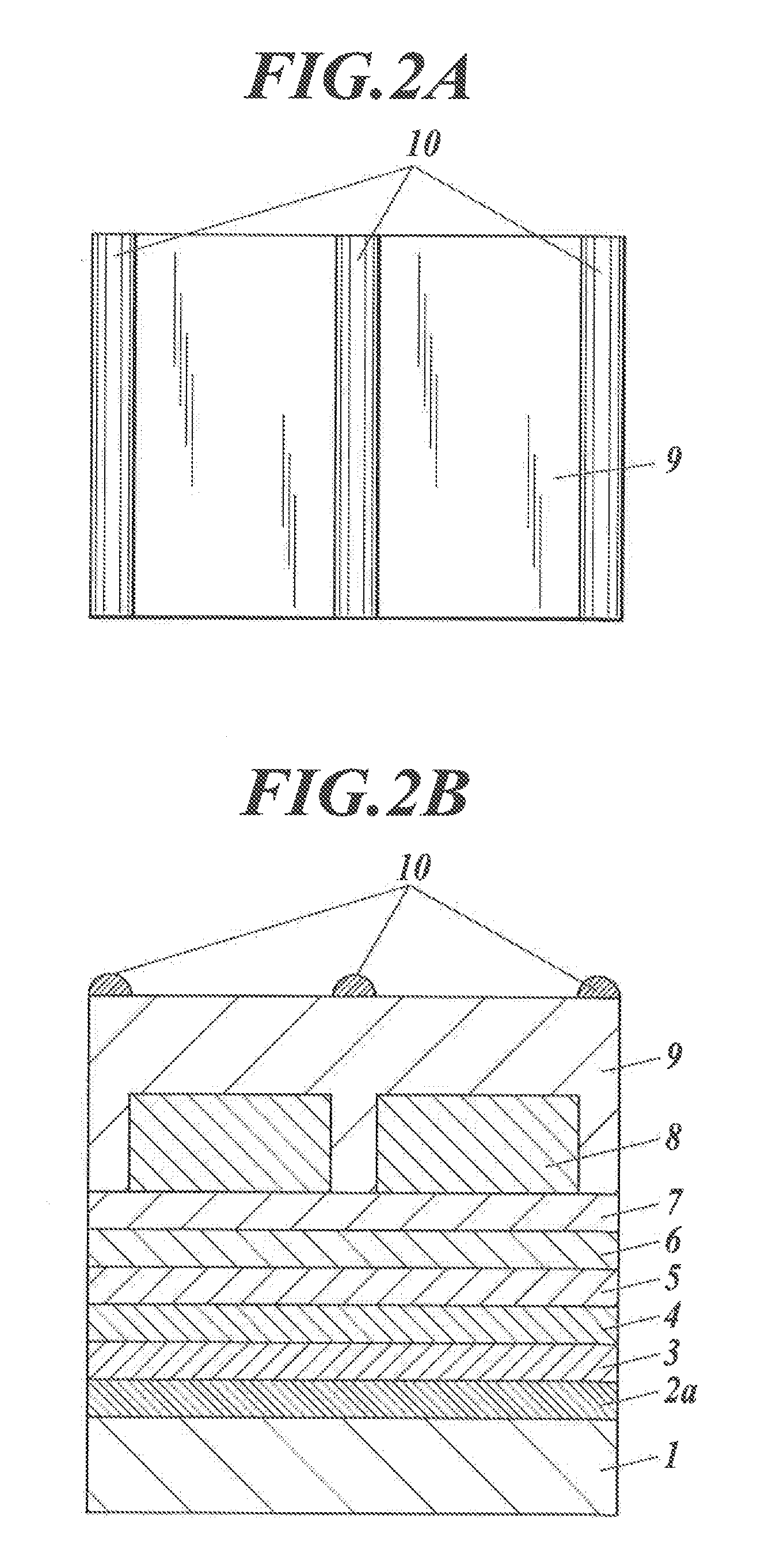Organic electroluminescence element and illumination device
- Summary
- Abstract
- Description
- Claims
- Application Information
AI Technical Summary
Benefits of technology
Problems solved by technology
Method used
Image
Examples
example 1
[0233]>
[0234]Organic El elements 1-1 to 1-26 were each produced in such a way as to have a light emitting area of 5 cm×5 cm.
[0235][Production of Organic EL Element 1-1]
[0236](Formation of Anode)
[0237]ITO was deposited on a transparent substrate 1 by sputtering under a condition of making the thickness thereof be 100 nm and then subjected to patterning, so that an anode constituted of an ITO layer was formed. Next, the substrate provided with the ITO layer was subjected to ultrasonic cleaning with isopropyl alcohol, dried with dry nitrogen gas, and then subjected to UV ozone cleaning for five minutes.
[0238](Formation of Positive Hole Injection Layer to Electron Transport Layer)
[0239]The substrate provided with the ITO layer was fixed onto a substrate holder of a commercial vacuum evaporation device. Then, the below-mentioned α-NPD, DPVBi, BAlq, Alq3 and potassium fluoride were placed in tantalum resistive heating boats, respectively, and the tantalum resistive heating boats were moun...
example 2
[0330]>
[0331]Organic El elements 2-1 to 2-23 were each produced in such a way as to have a light emitting area of 5 cm×5 cm.
[0332][Production of Organic EL Element 2-1]
[0333](Formation of Cathode)
[0334]Aluminum was deposited on a transparent substrate 1 by sputtering under a condition of making the thickness thereof be 100 nm and then subjected to patterning, so that an anode constituted of an aluminum layer was formed. Next, the substrate provided with the aluminum layer was subjected to ultrasonic cleaning with isopropyl alcohol, dried with dry nitrogen gas, and then subjected to UV ozone cleaning for five minutes.
[0335](Formation of Electron Injection Layer to Positive Hole Injection / Positive Hole Transport)
[0336]The substrate provided with the aluminum layer was fixed onto the substrate holder of the commercial vacuum evaporation device. Then, potassium fluoride, Alq3, BAlq, DPVBi and α-NPD were placed in tantalum resistive heating boats, respectively, and the tantalum resistive...
PUM
 Login to view more
Login to view more Abstract
Description
Claims
Application Information
 Login to view more
Login to view more - R&D Engineer
- R&D Manager
- IP Professional
- Industry Leading Data Capabilities
- Powerful AI technology
- Patent DNA Extraction
Browse by: Latest US Patents, China's latest patents, Technical Efficacy Thesaurus, Application Domain, Technology Topic.
© 2024 PatSnap. All rights reserved.Legal|Privacy policy|Modern Slavery Act Transparency Statement|Sitemap



